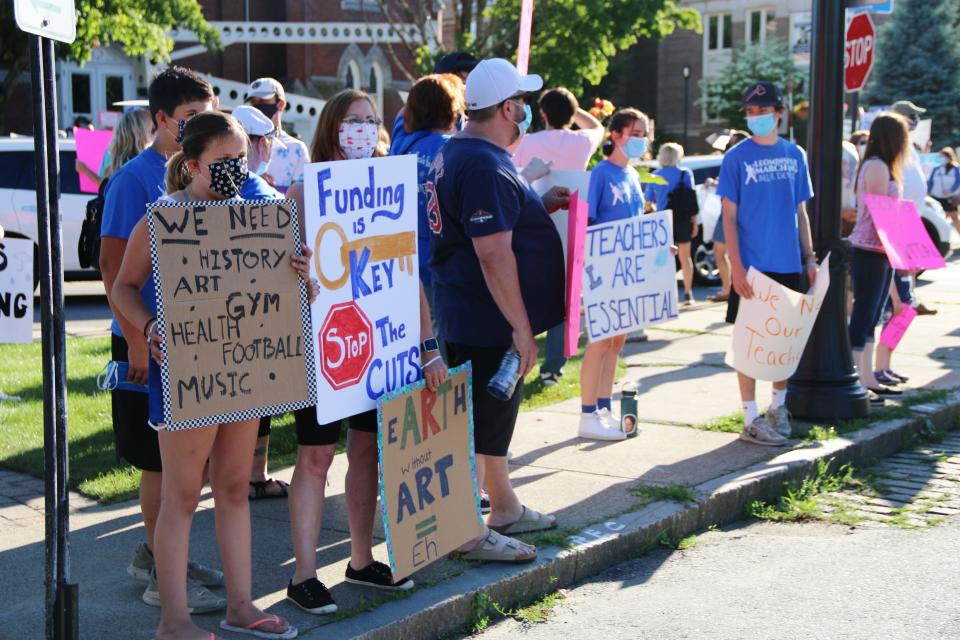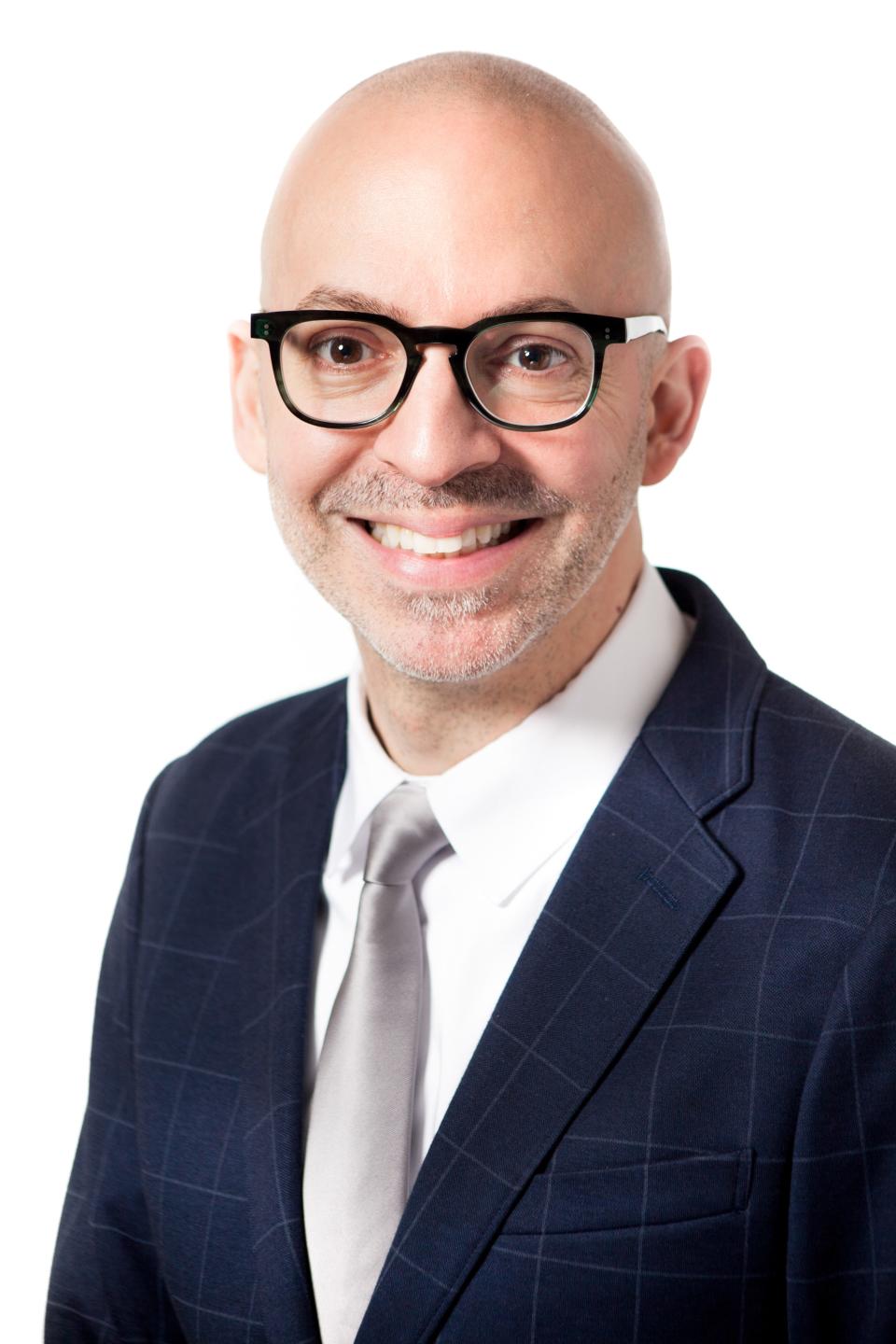A farewell to arts? Teachers fear coronavirus budget cuts may target art, music classes
If Becca Graves could press through the less pleasant parts of her junior year schedule at her small-town Massachusetts high school – the peers whose personalities perturbed her, the classes she didn’t care for – she could make it to Ms. E’s art class.
There she could relax, be herself, express her emotions without fear of judgment. Her anxieties eased as she focused on drawing assignments or molded clay figures with her fingers.
“I want to say it’s almost like a new coping skill,” said Graves, 17. “The art room at our school is a safe space.”
She ate lunch there daily rather than in the crowded cafeteria, as did a dozen or so other Murdock High School students. Despite their diverse lifestyles and political views, Graves said, one thing united them: their love for Nicole Elias: Ms. E.
When Graves starts her senior year in September, escaping to art class may no longer be an option.
Elias, along with all eight other teachers of specials, or elective classes – art, music and physical education – at Winchendon Public Schools, received notice that her contract would not be renewed because of budget constraints.
The teacher layoffs come as cash-strapped school districts nationwide must implement costly safety measures to prevent COVID-19’s spread and to equip students with the devices remote learning requires in the meantime.

Any school administrators pinning their hopes to another congressional relief bill have been disappointed so far. While House Democrats signed off in May on a $3 trillion bill that included more than $100 billion for schools, the Senate has resisted calls for additional aid to state and local governments.
Winchendon already was tasked with trimming $600,000 from its 2021 fiscal year budget before COVID-19 closed schools in March, according to district superintendent Joan Landers. Adding to the cost were expenditures in anticipation of students’ return: replacing carpeted floors with tile, testing air conditioning systems, storing excess furniture to allow for social distancing and supplying bus drivers with personal protective equipment.
In a town of 10,000 with five public schools, teacher salaries make up much of the budget. Each cut is close to the bone.
'Going to see massive cuts': Without more coronavirus relief, schools slash budgets, prep layoffs
“Everything in our budget is essential,” Landers said. “That’s the hardest part.”
As pressure builds on school districts for more cuts, experts fear the move to single out specials programs portends a nationwide trend that may disrupt the “whole child” approach to education, hinder academic growth and disproportionately hurt low-income families.
School districts struggling to navigate shrinking budgets may ask core subject teachers to incorporate art, music and physical education into their lesson plans to save on salaries, said Kristi Wilson, president of the American Association of School Administrators – an idea she opposes.
“We have a real opportunity to return back to what is good about education and the whole child,” Wilson said. “But we’re not going to do that if we push to cut the arts, and I fear that's coming.”

Arts and the achievement gap
Specials teachers across the country fear it, too.
In an open letter to school administrators, National Art Education Association president Thom Knab requested that they keep art programs a priority “even amid difficult budget decisions.”
Widespread concern among art teachers that their jobs are in jeopardy prompted the plea, according to Mario Rossero, the association’s executive director.
Yet those same teachers, who often provide instruction to a school’s entire student body, have unique insight into students, their families and the community, he said. As out-of-the-box thinkers by nature, they should be sought out and provided a seat at the decision-making table.
“This is the time to reinvest and double down on the arts,” said Rossero, who spent nearly 10 years teaching visual art in Pittsburgh and Chicago before moving on to administrative roles. “We are creative problem-solvers. We have limited resources, limited time and we try to pull off miracles. We’re pretty good at figuring out ways around challenges and roadblocks.”

Though art and music are designated “specials” rather than “essentials,” they are particularly vital to the overall success of students whose only access to the subjects is through public schools, said Andrew Spar, Florida Education Association vice president and a former elementary school music teacher.
“When lawmakers say they have to address the achievement gap, the way to address it is to make sure those students have access to arts, P.E. and elective programs that engage them and pull them in in ways they otherwise wouldn't get,” Spar said.
During his nine years teaching in one of the poorest communities in Daytona Beach, Florida, he saw students who participated in the school’s performing orchestra achieve greater test score growth than those who didn’t.
“Students who excel in music also tend to do a lot better in problem-solving, visioning and understanding the big picture and how things fit together,” Spar said. “For kids that come from poverty to be able to say ‘I have an advantage that someone else doesn't have’ – that's pretty rare.”
The arts, and the inclusivity they encourage, play an important role in the “whole child” approach to education, which is centered on ensuring that each student – regardless of race, socioeconomic standing or learning style – is healthy, safe, engaged, supported and challenged.

“Think about every student – maybe the kids who are quiet and creative and need to express themselves,” Rossero said. “What are they going to do without an art space? It might be the reason they’re really engaging each day.”
The way that Graves described Elias’ art room as a safe space is not uncommon, he said. “It’s often a lifeline for students.”
‘It’s their only way out’
Elias describes Winchendon as a tiny town with inner-city problems. Many of her Murdock High students are impoverished. Some spend their spare time hunting and fishing – there’s not much else to do – and they bring Elias gifts of venison and turkey.
Their parents can’t afford music lessons or museum trips. Few have traveled even as far as Worcester, the nearest sizable city, just an hour south. Some of her students have lost parents to suicide, drug overdose or disease. Some live with relatives or in foster homes.

“It seems there are a lot of tragic cases,” Elias said, a sense that’s amplified in a close-knit community.
She has worked to cultivate her classroom’s soothing atmosphere. She understands the turmoil her students feel and the power of art to alleviate it.
If the district doesn’t renew her contract, she worries more for the students than herself.
“It's a detriment to them to have not just visual arts cut but music, theater, P.E. For some of these kids, it's their only way out,” she said. “It really helps to save lives.”
Landers, the district superintendent, said she is a “very strong advocate” for the arts and is “hopeful” that at least some specials teachers’ contracts can be renewed in the coming weeks. The district originally cut 38 teaching positions, but many of the teachers in other subject areas have been invited back.
“I have to believe that something positive is going to happen to enable us to give our students the best education they deserve,” Landers said.

For Graves, losing her safe haven is one more stressor in a senior year that already will be filled with so many uncertainties. When she heard Elias had lost her job, Graves said she emailed district officials to ask how she could help. “I want to know what I can do to make sure Ms. E stays with us,” she recalled writing.
Graves was motivated to take action, she said, because Ms. E’s art class helped her lay down a burden she’d carried since childhood when her parents separated. Her father left home, and Graves shouldered the blame.
“I tried to do something about it to make myself better so maybe he would come back,” Graves said. Ms. E helped change her mindset.
“There’s nothing I could have done, and it took a lot to realize that,” Graves said. “Art is a reminder to me that you don't have to be perfect.”
This article originally appeared on USA TODAY: COVID back to school: Will virtual learning mean no art, music class?

